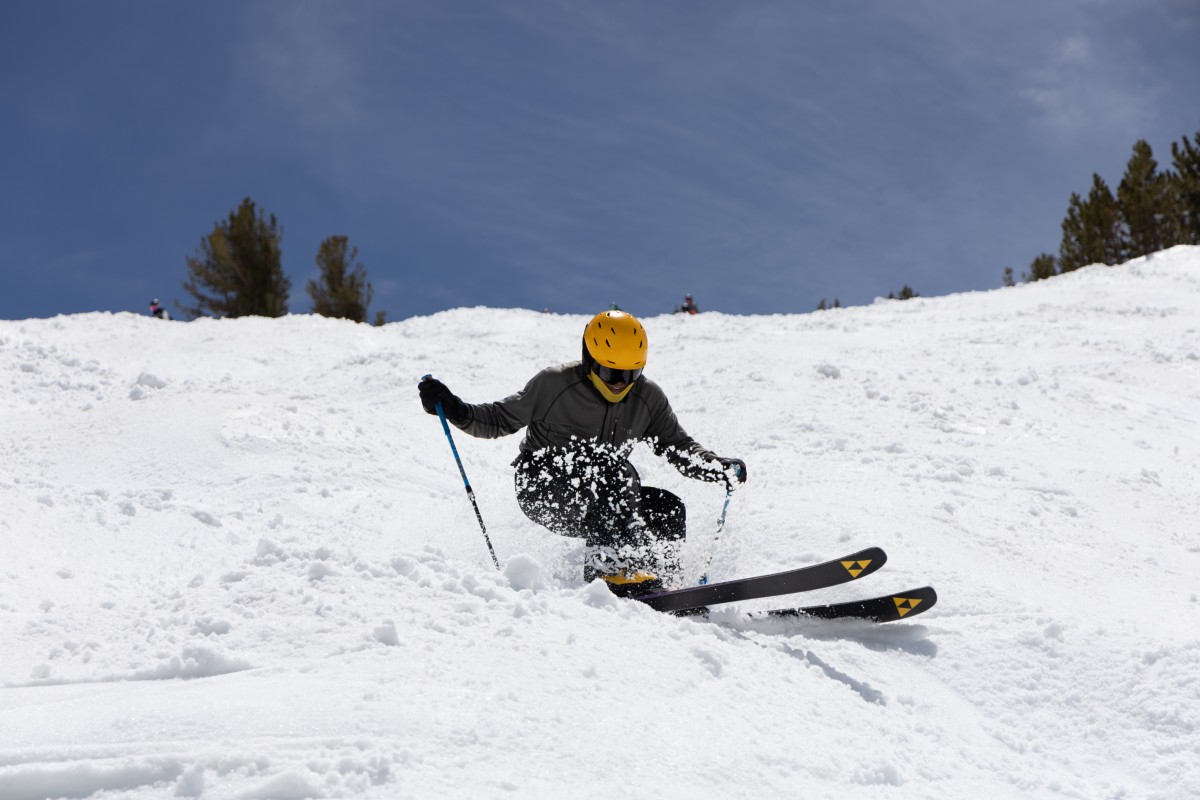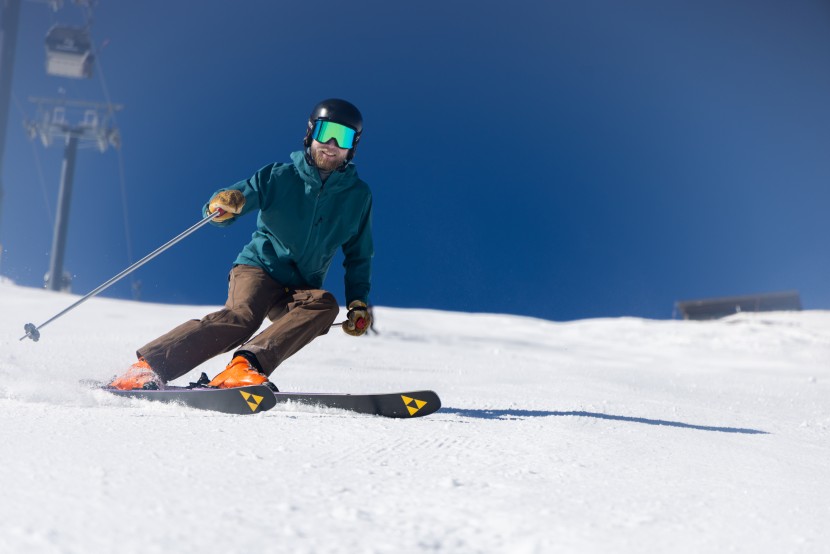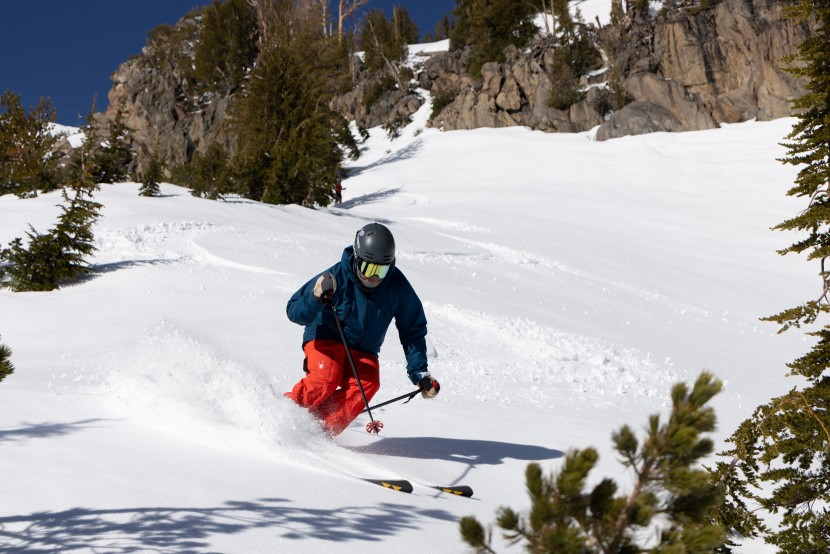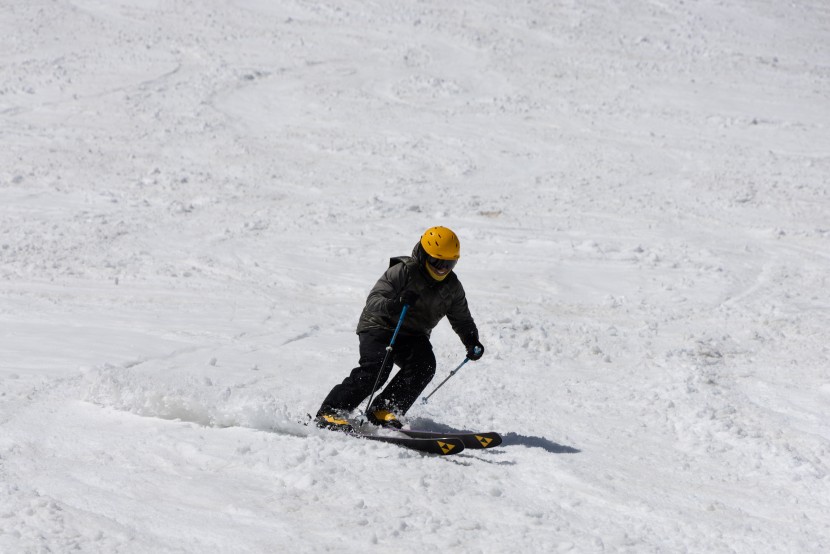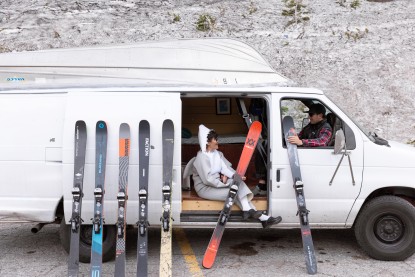
Our Verdict
Our Analysis and Test Results
With Fischer's Shaped Ti, wider models in the Ranger family feature shorter length titanal, and narrower models are embedded with longer lengths of titanal. Smack dab in the middle of available widths of the Ranger family, the Ranger 96 is an excellent balance of power and playfulness. This ski is also unique in that it is available in two color options in this size: the bright yellow version we tested, and a more conservative all-grey topsheet.
Stability at Speed
Heavier skis tend to be more stable, and this ski is among the heavier in our review at 9.2 pounds per pair. However, Fischer's Shaped Ti technology, which tailors the length of the titanal based on ski width, is likely a factor – with less titanal towards the tip, there is a slight loss of stability at high speed. The Ranger 96 is not specifically designed for mach-silly speeds, and our testers noticed some tip flap on firm snow surfaces.
Interestingly, it wasn't at consistent high speeds that they noticed this issue – it was in sudden changes of speed. Exiting a mogul trough with some zip, for instance, required careful attention to the more delicate next turn. If you weren't careful in your execution, the front of the ski would suddenly compress, which was surprising for some of our intermediate-level testers.
Carving Ability
Carving with the Ranger 96 is a joy. Coming in at 98 millimeters underfoot, this ski is a bit wider and a bit slower edge-to-edge than our favorite carving skis. Rather than a detriment, this is a strong attribute of the Ranger 96. One tester described it as “a blend of identities” that makes it more nimble than some other, more predictable skis. It's quick to break loose the tails, which makes it easy to change course – the Ranger 96 is more playful than precise with its carves.
The shorter layer of titanal, relative to the ski's overall length, greatly affects the flex profile of the Ranger 96. Despite its listed 19-meter turn radius, our team agrees that this ski has a preference for small- to medium-radius turns. The Ranger 96 offers a solid grip, consistent flex, and a satisfying, predictable snap from one turn to the next.
Powder Performance
Despite its relatively moderate waist width, the 130 mm tip on the Ranger 96 provides great floatation at most speeds and through different densities of powder snow. At the 187 cm length we tested, these dimensions, combined with the tailored sheet of titanal, gave the Ranger 96 a gradual flex that made skiing powder fun and predictable.
Powder skiing, specifically, is where we think lighterweight advanced-expert-level skiers will appreciate the Ranger 96 the most. If you're a strong skier and you're between sizes, we recommend sizing up, especially if you're close to the 187-centimeter length we tested – this ski was an absolute blast on powder days at Mammoth.
Crud Performance
The Ranger 96 navigates cut-up powder and slush with ease and confidence. While some of our heavier skiers found it a bit more difficult to manage in refrozen crud, much like our experience skiing powder, this is where lightweight skiers on our team felt the Ranger 96 shone brightest.
Specifically, the shorter sheet of titanal made it harder for heavier skiers to feel like there was much support from the tips – one tester noted that he would feel “Too far forward all of a sudden.” Many of our larger testers were cautious skiing the Ranger 96 in variable, firm conditions. “But if I was on my game,” commented that same tester, “this ski would still perform consistently, even in nasty conditions.”
Terrain Playfulness
We had a lot of fun on the Ranger 96 dodging through glades, flowing over rolling terrain, and playing in drainages. Although it's relatively heavy on paper, our testers noted that this ski had a notably light swing weight. We were confident navigating trees and other terrain where quick reaction times and nimble skiing are paramount.
This is, again, a place where Fischer's Shaped Ti technology plays positively into the Ranger 96's performance. With less metal, this ski has a lighter swing weight, which means you can turn this ski quickly with less effort, especially compared to other skis in the same weight class.
Bumps
The Ranger 96 was especially enjoyable as a bumps ski. The progressive flex in the tip softened impacts at the bottom of particularly deep troughs, and the sidecut and light swing weight make it easy to pivot quickly. Even with a relatively wide waist width of 98 millimeters (in the 187 cm size we tested), this ski still felt playful and maneuverable through narrow ruts around abnormally shaped moguls.
Even in crusty conditions, the Ranger 96 was able to absorb and re-camber predictably. The ski flexes and returns to its original camber quickly, but with minimal rebound, making it much more approachable for intermediate-level skiers.
Should You Buy the Fischer Ranger 96?
The redesigned Ranger 96 offers an accessible combination of power and grace that makes it stand out among other all-mountain skis we tested. We applaud Fischer for crafting a ski that allows a wide range of skiers to ski confidently in a range of conditions. If you particularly love skiing moguls after all of the powder is gone, your search should end with the playful Ranger 96.
What Other Skis Should You Consider?
Not many other skis in our lineup offer such consistency as an all-mountain ski. If you are willing to give up some playfulness for power and stability at speed, the Armada Declivity 92 Ti is a more confident carver. If you're worried about the weight of the Ranger 96, the Faction Agent 2 is lighter weight and just as playful.


